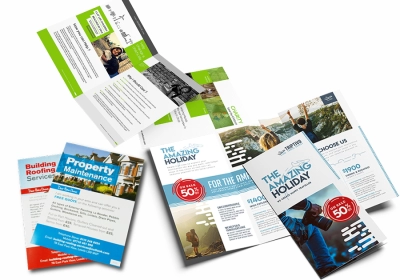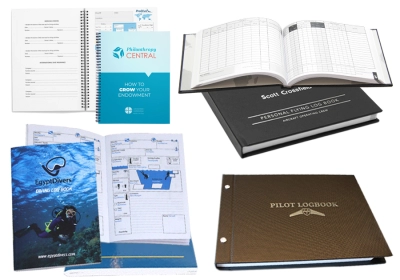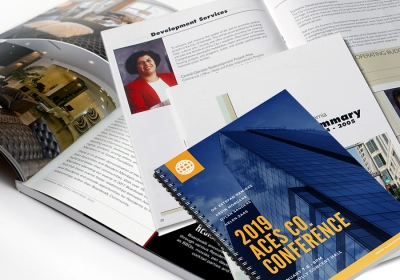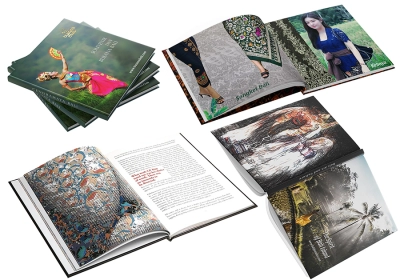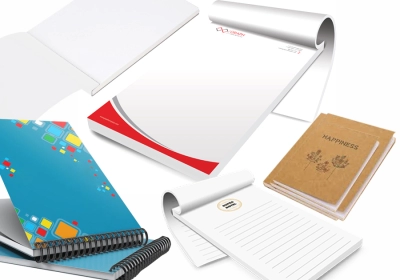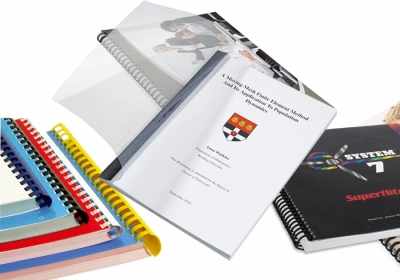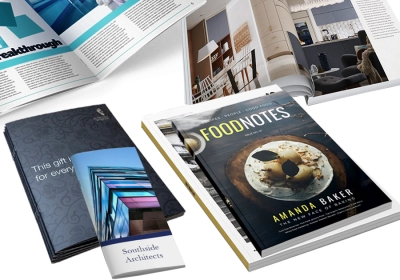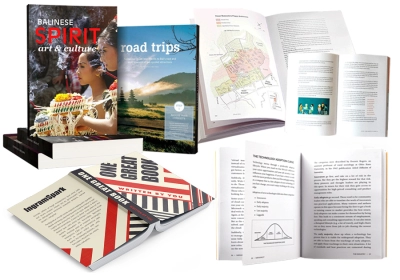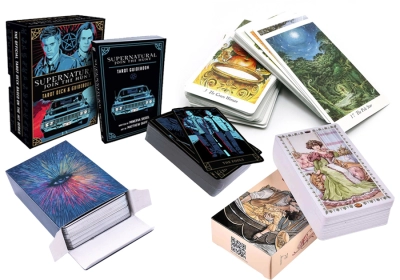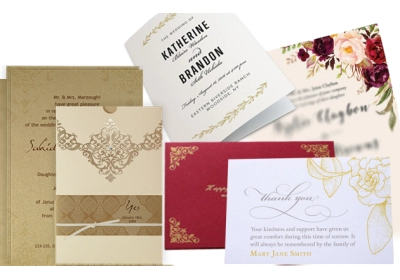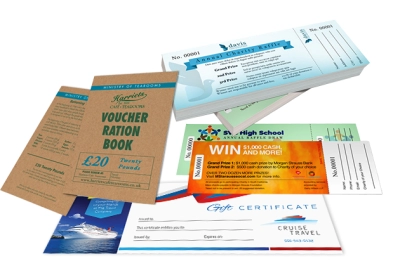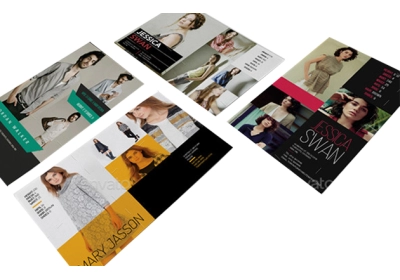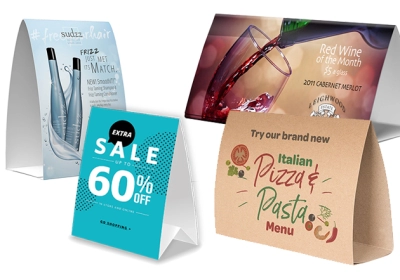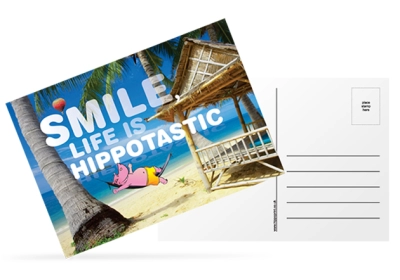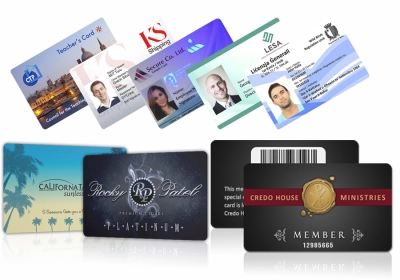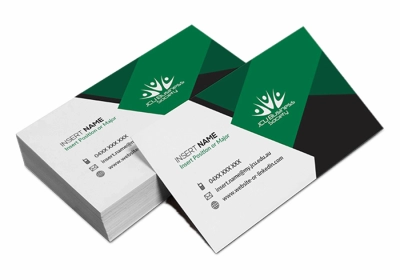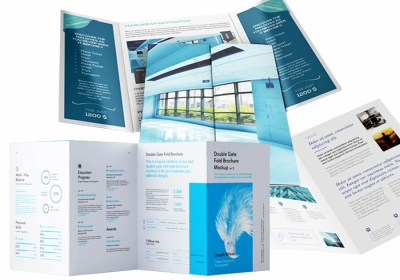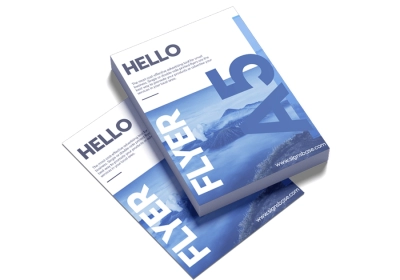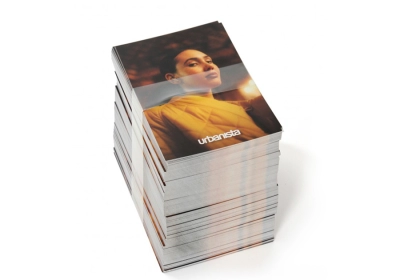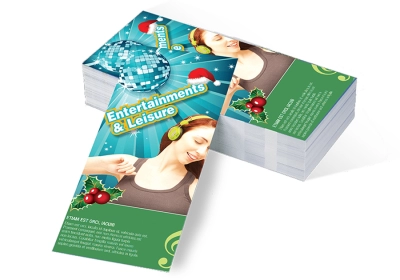Paper Type & Weight
The paper type and weight can sometimes affect how you prepare your press ready files, especially related to folding and binding, so confirm your paper choice with your printer to make sure any considerations are accommodated.
Paper options can be daunting: here's what you need to know to get started.
Choose Paper with the Right Weight
A paper's weight is, more or less, a measure of its thickness. A higher weight will be sturdier, thicker and firmer. Higher weight papers are great for business cards, bottle-neckers, cards, tags and catalog covers. Lighter weight papers are ideal for brochures, envelopes, stationery and interior pages of catalogs. Higher weight paper is usually more expensive.
There are also premium papers that are made with a high quality texture. They feel great to the touch and are used for some stationery, formal invitations, artwork and important legal documents. Choosing a paper weight means thinking about how your piece will be used. Will it be held? Will it be abused in a wallet or purse? Will it be bound into a thick, hundred page catalog? Is it going to be folded?
What is paperweight?
The technical definition of weight, or gram, is “the weight of a sheet of paper with a surface area of one square metre”; in other words, it represents the ratio between the weight of the paper and its area. It is measured in grams per square metre (gsm) or simply in grams (g) and is a way of distinguishing between the various types of paper on the market, along with some other characteristics, which we will look at shortly.
For example, photocopy paper (also known as ‘uncoated paper’) has a weight of between 60 gsm and 100 gsm, while paperboard has a weight ranging from 150 gsm up to 350 gsm. The grammage affects the paper’s texture to the touch and its level of transparency, which will be lower if you choose a paper with a higher weight. It’s important to distinguish between the weight of the paper and the thickness, or calliper, of the sheet.
Paper weight is an important component to consider before made order for your artwork printing. Heavier media often conveys quality and provides durability. Unfortunately, sorting through the various methods of labeling a paper’s weight is not always straightforward. First, there are three common methods for specifying paper weight and thickness: U.S. Basis Weight (Bond, Book, Index, Cover, Tag, Points, Offset ), Metric weight (GSM or G/m2) and, often interchangeable, Points (an actual Caliper reading of the paper thickness).
The U.S. Basis (not basic) Weights, are the most confusing, simply because the same paper can yield different values based on the “Basis Weight” applied while manufacturing the paper. And higher values don’t always equate to heavier/thicker print media. For example, a sheet of 100lb Text paper is actually much thinner than an 80lb Cover stock.
The “Basis Weight” is defined as the weight of 500 sheets of paper in its basic unit uncut size, which means before being cut to Letter size or Legal size, the paper is weighed and categorized. The most common sizes, some of which you may recognize, are Bond, Text, Book, Cover, Index and Tag. An uncut sheet of Bond paper is 17 x 22 inches, while an uncut sheet of Cover paper is 20 x 26 inches. If 500 sheets of Bond paper (17 x 22 inches) weigh 20 lbs, then a ream of paper cut to Letter size will be labeled as 20 lb. And if 500 sheets of Cover paper (20 x 26 inches) weigh 65 lbs, then a ream of this paper trimmed to tabloid size would be marked as 65lb.
Metric weight (GSM or G/m2 measurement that is nearly always displayed alongside the U.S. Basis Weight. The metric measurement (sometimes called Grammage) is the actual weight of one sheet of media cut 1 x 1 meter square. Because the same size sheet is always being weighed, GSM (grams per square meter) provides a more uniform scale to judge a paper’s weight and thickness.
Having given an explanation of paper weights used internationally and in the US this page covers conversions between weights and stock paper types used in the US and the weights used internationally. Below are tables for each stock type covering the commonly found weights within each Lb type and its Gsm equivalent :
Coated Paper — Semi Gloss Art Paper and Matte Artpaper
- 54 lb = 80 gsm
- 68 lb = 100 gsm
- 82 lb = 120 gsm
- 101 lb = 150 gsm
Uncoated Paper — Plain Paper / HVS / Office Paper / Copy Paper
- 54 lb = 80 gsm
- 68 lb = 100 gsm
- 81 lb = 120 gsm
- 95 lb = 140 gsm
- 122 lb = 180 gsm
Perfect Bound — Art board /Art carton / Artpaper and Plain Paper
- 9 pt = 210 gsm
- 10 pt = 230 gsm
- 12 pt= 260 gsm
- 14 pt = 310 gsm
- 16 pt = 350 gsm
- 18 pt = 400 gsm
Hardcover board — Grey / Yellow Board cartoon
- 60 pt = 1.4 mm = 1,000 gsm
- 65 pt = 1.8 mm = 1,100 gsm
- 70 pt = 2.0 mm = 1,200 gsm
- 80 pt = 2.25 mm = 1,400 gsm
- 88 pt = 2.5 mm = 1,600 gsm
- 92 pt = 2.8 mm = 1,700 gsm
- 98 pt = 3.0 mm = 1,800 gsm
Paper Thickness List
- 80gsm offset paper: 0.095mm
- 100gsm offset paper: 0.123mm
- 120gsm offset paper: 0.14mm
- 190gsm offset paper: 0.26mm
- 250gsm offset paper: 0.335mm
- 80gsm gloss art paper: 0.062mm
- 100gsm gloss art paper: 0.095mm
- 120gsm gloss art paper: 0.11mm
- 150gsm gloss art paper: 0.15mm
- 210gsm gloss art paper: 0.18mm
- 250gsm gloss art paper: 0.234mm
- 300gsm gloss art paper: 0.275mm
- 350gsm gloss art paper: 0.41mm
- 80gsm matte art paper: 0.07mm
- 105gsm matte art paper: 0.1mm
- 120gsm matte art paper: 0.125mm
- 150gsm matte art paper: 0.16mm
- 210gsm matte art paper: 0.195mm
- 250gsm matte art paper: 0.24mm
- 300gsm matte art paper: 0.32mm
Choose the Paper Type
Papers also come coated or uncoated. Coated papers have a gloss or matte finish that resists smudges and stains and displays the ink brighter and crisper. This also makes writing on the paper difficult. It's best used for brochures, some business cards and marketing pieces that need to look higher end and aren't being used for writing.
Uncoated papers lack this solid surface and are more porous. They are easy to write on, but can get smudged and stained more easily and the ink looks duller.
Whether you’re printing business cards or books, or producing an advertising display or a flyer, every product has a recommended weight. Choosing the wrong type of paper for printing your graphic design or publishing project can ruin the final effect
UNCOATED PAPER
Also called as wood-free paper, copy paper, HVS or offset paper, uncoated paper is manufactured using wood mixed with a few chemicals. Ideally, the uncoated paper is used for offset printing of text books and magazines. Unlike coated paper, uncoated paper has a surface that is nonglare, giving it a quite natural appearance. Uncoated paper is perfect for reading and writing, and this is the reason why most student books and notebooks use uncoated paper for the interior.
Uncoated paper is available in different thickness levels, like, 70gsm 80gsm, 100gsm is called HVS in, 200gsm (BC) and 250gsm (Bluish White). Generally, 70gsm, 80gsm, and 100gsm offset paper are used for printing student books, whereas, 80gsm and 100gsm offset paper is preferred for printing envelopes or brochure. As far as hardcover end sheets or catalog covers are concerned, a 250gsm offset paper would be a perfect choice.
HVS / OFFICE PAPER / PLAIN PAPER
The word HVS comes from Dutch language, Houtvrij Schrijfpapier, which means “paper without wood fiber”. It is because HVS paper is made from paper pulp that has no lignin, a cross-fiber adhesive contained in a tree. This makes HVS paper not easily turn yellowish when stored under the sun. The characteristic of HVS paper is that the surface is not coated like art paper, so it has a high absorption. HVS paper has a variety of sizes, ranging from A3, A4, A4s, F4, Q, Qs, B5, etc. Also, the gramation of HVS paper ranges from 60gr, 70gr, 80gr, to 100gr.
BOOK PAPER / NOVEL PAPER
A book paper (or publishing paper) is a paper that is designed specifically for the publication of printed books.
Traditionally, book papers are off-white ( cream and light grey) or low-white papers (easier to read), are opaque to minimize the show-through of text from one side of the page to the other, and are (usually) made to tighter caliper or thickness specifications, particularly for case-bound books. Typically, books papers are light-weight papers 60 to 90 g/m2 and often specified by their caliper/substance ratios (volume basis). For example, a bulky 80 g/m2 paper may have a caliper of 120 micrometers (0.12 mm) which would be Volume 15 (120×10/80), whereas a low bulk 80 g/m2 may have a caliper of 88 micrometers, giving a volume 11. This volume basis then allows the calculation of a book's PPI (printed pages per inch), which is an important factor for the design of book jackets and the binding of the finished book.
Different paper qualities can be used as book paper depending on the type of book.
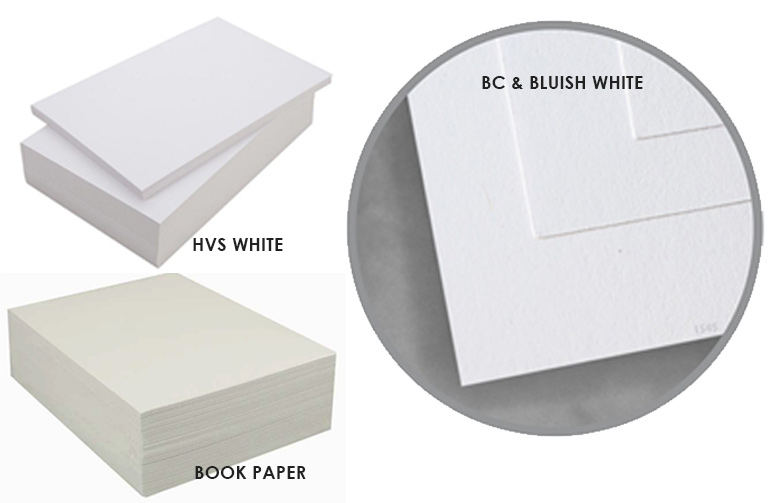
It is a natural paper which is not subjected to any chemical treatments. Plain paper, also known as "HVS" 60-80 gsm it is ideal for printing large quantities of text, producing a relatively light and thin printed document. It can be used in either a white colour for the inside pages of paperbook prints and for printing documents , envelopes or letter head paper. Uncoated 200-250 gsm paper suck as BC paper and Bluish White are ideal for certificates, any card, ticket, invitation, postcard, voucher and posters.
Bluish White Paper
Bluish White (BW) is white paper with rough texture similar as HVS Paper, widely used for business name cards, book covers, agendas, and certificates printing. Bluish White paperweight varies from 210 gsm to 250 gsm.
NCR PAPER
NCR paper may sound quite unfamiliar to your ears but I bet you are familiar with invoice book, and that is made from NCR paper. NCR paper has a soft and thin texture. NCR is the abbreviation of No Carbon Required, which is a type of paper commonly used for making bills, receipts, checks, notes, and other transaction books because it has additional sheets underneath for duplicating records. NCR paper can be an alternative to carbon paper to copy drawing, writing, or information.
COATED PAPER
Art Papper or Art Caton
Also known as art paper, the coated paper has a coating of mixed materials on both sides of the paper. Known to be one of the highest quality printing paper, coated paper is commonly used for printing color books, catalogs, brochures, and calendars.
Coated paper can come in both gloss and matte finish, and is also available in different weight preferences. With us, you can choose from, 85gsm, 105gsm, 120gsm, 150gsm, 210gsm, 230gsm, 260gsm, 310gsm, 350gsm, 400gsm gloss art, and matte art paper. The reason why the coated paper is a great choice to print color photos is the fact that this kind of paper has a tendency to absorb less ink. But, as far as writing is concerned, coated paper is not a preferred choice.
Coated One Side Paper (C1S)
Also known as card paper. Their 2 type; Glorypaper (High Gloss one side) and Ivory paper (Semi gloss one side). These paper is coated from one side and uncoated from the other side. Generally, the coated side of this paper is used to print color images and the uncoated side is used to print text, black and white images, Pantone color or is left blank. The fact that this paper serves both the purposes of printing color images on one side and text on the other, it is largely used to print book covers, postcards, presentation folders, paper boxes and much more.
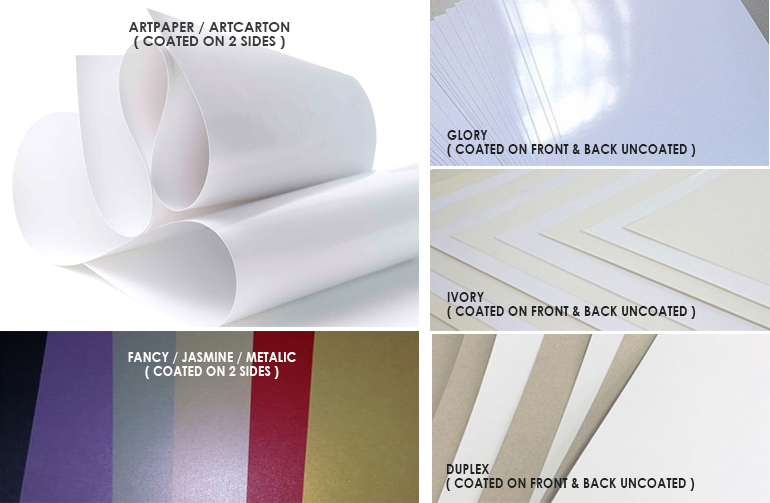
Coated paper with a grammage of 85 - 190 gsm (generally use artpaper) are suited to reproducing high-quality colour images and is perfect for printing for glossy tabloid or magazines, folder flyer and brochures. The 210-230 gsm paper, a relatively light paperboard, which ensures a pleasant texture and excellent colour rendering and is ideal for printing booklet, presentations, and posters. It is available in coated, environmentally friendly and can be given a gloss or matte laminate finish.
Artcarton 260 semi-rigid paperboard is recommended for creating business cards, book covers, presentation folders and invitation cards. Its thickness ensures excellent strength and durability. The 310 - 350 gsm artcarton / artpaper is a cardboard used for packaging, rigid book covers and folders, counter displays and product tags. It is highly shock- and dent-proof.
Apart from its two-side paper surface feature, C1S paper is also available for paperboard, packaging box (Duplex paper) in different levels of thickness, like 350gsm, 400gsm and 450gsm. This Duplex paper type are used for printing paper boxes of different sizes.
Ivory Paper
Ivory paper is a type of paper that has two different sides. One side of the surface has a smooth and glossy coating, while the other side is not coated. Ivory paper is commonly used to make wrappers, posters, packaging box for cosmetics, medicine, and food.
Duplex Paper
Duplex paper is easily recognized because it is used as product packaging for a lot of stuff, for instance, milk box, cake box, medicine package, and beverage package. Duplex paper has two sides of different colors, one side is white and the other side is gray. The white side is glossy, while the gray side is slightly fibrous.
Fancy Paper (Jasmine paper)
When was the last time you received a wedding invitation from your family or relatives? Did you know that invitation cards are made out of jasmine paper? Jasmine paper has glittery characteristic, making it the ideal choice of paper for invitation cards because it gives an impression of luxuriousness. In addition, jasmine paper is often produced for funny and cute greeting cards, and also for office envelopes because it has a sense of exclusiveness as a funny greeting card.
Other than art paper, uncoated paper, and C1S paper, we also provide a number of other high-quality special papers for your cover surface, wedding cards and invitation card printing purposes. Some of these special papers include; parchment paper, textured paper, metallic glitter paper and much more. We also provide these special papers in a variety of colors, including silver surface paper, gold surface paper and so on. Our special papers are also available in different weights, from 80gsm and 230gsm as per your order needs.
RECYCLED PAPER
Samson Paper
One of you must have some envelopes or paper bags at your house. Did you know? That type of paper is called Samson. What a unique name! Samson paper is produced through a recycling process. This paper is often used for envelopes and paper bags. Samson paper is very easy to get because it is sold in every stationery store, photocopy store, and bookstore. Generally, samson paper comes in 2 versions of colors, which are brown and white.
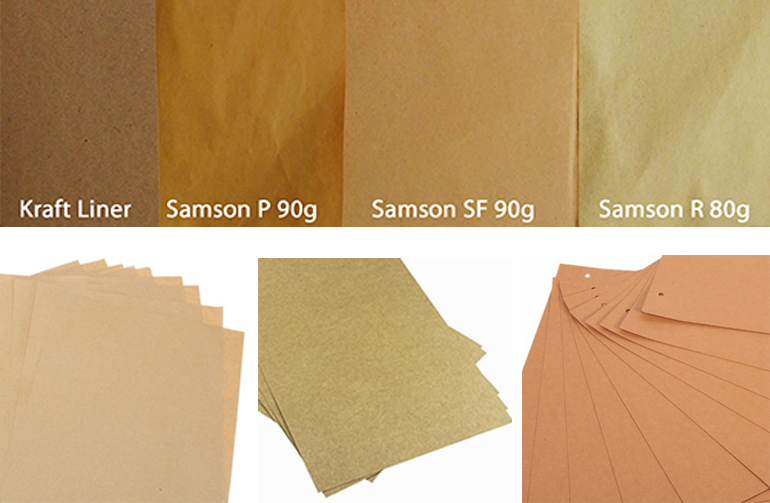
CRAFT PAPER
Made from re-used paper products, recycled paper is perfect for those who are trying to reduce their environmental impact. To be truly eco-friendly, white recycled paper must be bleached without using polluting chemicals. Example for this type paper is "Brown paper" or Craft Paper.
Corrugated Paper
Corrugated paper is, just like its name, a layered and corrugated paper that has thick gramation. Because it has cushion condition inside the paper to prevent collisions, corrugated paper is the main material of cardboard to wrap and protect an item. Because it is only available in brown, corrugated paper is not suitable as a writing medium or a creative material.
WATERMARKED PAPER
Used in high quality paper watermarked paper give a feel of luxury and high quality. To create its desired effect an impression is pressed into the paper by attaching a wire pattern. This type of paper is commonly used as a security feature for important documents, including exam certificates.
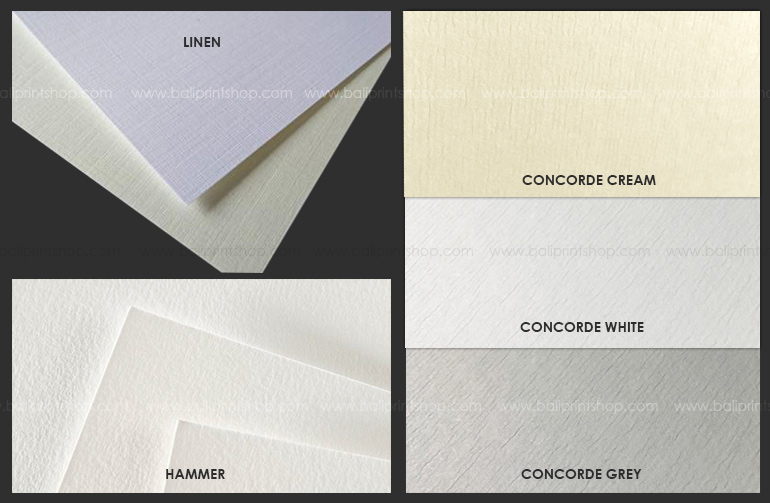
LINEN PAPER
Linen is a paper that is made from hemp wood fiber mixture. Fun fact about linen is that historically linen has ever been used for clothing. Linen paper has a distinctive striped texture that forms vertical and horizontal patterns. Linen paper has thick gramation, which ranges from 220gr to 250gr, making the paper suitable for book cover or agenda. However, linen paper cannot be used as printed material because its rough texture will produce uneven printing result.
Concorde Paper
Do you want to print a certificate but don’t know what kind of paper best to use? Concorde paper is the answer! Concorde is a paper that has thin lines, causing the surface slightly embossed. Unlike linen paper that only has 2 gramation, concorde paper comes in various thicknesses, ranging from 160gr to 250gr. Concorde paper also has many choices of colors.
SPECIAL PAPER
Papers and paperboards that have undergone specific processes such as coating, laminating or other procedures to achieve highly original visual and tactile effects.
So now you’ve decided on the paper type, next comes the size. As there are many sizes of paper you can become lost amongst differing measurements.

